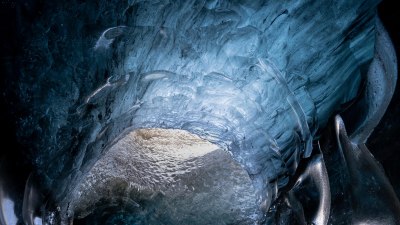How Planes Create Clouds: The Surprising Weather Effect of Contrails
Discover how planes influence cloud formation and weather patterns through contrails.

Image by Mateus-Andre on Freepik
When we look up at the sky, we might see the blue expanse stretching endlessly, occasionally interrupted by fluffy white clouds. But have you ever wondered how these clouds form and, more intriguingly, how planes contribute to this process? The phenomenon of contrails, short for condensation trails, plays a crucial role in cloud formation and weather effects. In this article, we will explore the science behind contrails, how they affect our atmosphere, and why understanding this can help us comprehend broader climate implications.
Contrails are line-like clouds that form in the wake of aircraft, originating from the water vapor and other gases produced during combustion in jet engines. As planes fly at high altitudes, typically around 30,000 to 40,000 feet, the temperature can be significantly colder, often below freezing. When the hot, moist exhaust from the engines meets the frigid air at high altitudes, it cools rapidly, condensing into tiny water droplets or ice crystals. These collections of ice crystals create the visible white streaks we recognize as contrails.
The basic mechanics of contrail formation hinge on a few scientific principles. Two key factors dictate whether contrails will form: humidity and atmospheric temperature. If the air is saturated with moisture, contrails are more likely to persist. In contrast, if the atmosphere is dry, contrails will dissipate shortly after formation. This is why you might notice varying lifespans of contrails under different weather conditions. Sometimes, they evaporate almost immediately, while at other times, they spread and linger for hours.
The Role of Contrails in Cloud Formation
Once contrails form, they can contribute to the development of other types of clouds. When the conditions are appropriate, these ice crystal trails can evolve into cirrus clouds, which are high-altitude, wispy clouds that can cover large portions of the sky. This transformation is significant, as cirrus clouds can have a warming effect on the Earth's climate by trapping heat. This phenomenon is particularly relevant in discussions about climate change and aviation's contributions to it.
While contrails were once considered a mere nuisance for pilots and a curious sight for observers on the ground, scientists now recognize their broader effects on our climate and weather systems. Studies have indicated that these man-made clouds can influence local and even global weather patterns through their interaction with natural cloud systems. For example, an increase in contrail coverage can lead to altered precipitation patterns, potentially affecting rainfall distribution in certain regions.
Climate Impact of Contrails
The interaction between contrails and cloud formation is not merely an interesting scientific fact; it has significant implications for climate change. As air travel has increased over the past few decades, so too has the frequency and volume of contrails in the atmosphere. Researchers estimate that commercial aviation contributes notably to global warming through the production of contrails, particularly in regions where air traffic is dense.
One of the primary effects of contrails is their potential to increase the amount of greenhouse gases in the atmosphere. Persistent contrails can produce cirrus clouds that add to the greenhouse effect, acting as insulators that trap heat. This can lead to warmer temperatures at the Earth's surface, influencing weather patterns over time. Furthermore, scientists have found that the warming effect could be comparable to that of carbon dioxide emissions from planes. This relationship highlights the importance of addressing not only the carbon footprint of aviation but also the non-CO2 effects, such as contrail formation.
The Science Behind Contrail Contradictions
Interestingly, the climate effects of contrails can be both positive and negative. In some instances, contrails may have a cooling effect. For example, when contrails reflect solar radiation away from the Earth, they can lead to temporary cooling effects in certain areas. This duality creates a complex and ongoing discussion within climate science regarding how aviation might influence our planet's temperature extremes.
Understanding this dual nature of contrails complicates the conversation around aviation's role in climate change. It challenges policymakers and researchers to strike a balance between promoting air travel and mitigating its environmental impacts. As such, ongoing research aims to better quantify these effects and discern strategies to minimize aviation's climate impact over time.
Future Solutions and Innovations
So, what can be done to mitigate the adverse effects of contrails and better manage their impact on cloud formation and climate? Several strategies and technological advancements are currently being explored. For instance, improving aircraft fuel efficiency and propulsion technologies can reduce overall emissions, impacting contrail formation minimally.
Additionally, there have been discussions around altering flight paths to minimize the formation of contrails. By optimizing routes to reduce flight times while avoiding the most conducive atmospheric conditions for contrail creation, airlines can potentially decrease their contributions to contrail-related cloud formation.
Public Awareness and Action
Raising public awareness about contrails and their impact on cloud formation is crucial in the fight against climate change. By understanding how our everyday actions, like taking a flight, can influence the weather and climate system, individuals can make more informed choices. This awareness can lead to increased demand for sustainable aviation practices and innovations that prioritize environmental responsibility.
Moreover, as travelers become more eco-conscious, airlines may be prompted to adopt greener alternatives, allocate resources for research, and fund projects aimed at transitioning to more sustainable models with minimal contrail effects.
In summary, contrails are more than just a byproduct of air travel; they play a significant role in cloud formation and can impact global weather patterns. As we continue to study the intricate relationship between aviation and climate, understanding contrails' role is crucial in developing more sustainable practices. By addressing this phenomenon head-on and raising awareness, we can work towards minimizing the environmental impact of air travel while still enjoying the benefits of global connectivity.











